Description
2024 Mercury 6 HP MLH: The Ultimate Portable Outboard Motor Guide
Introduction
Here’s a shocking truth that most small boat owners discover too late: The wrong outboard motor choice will cost you thousands in repairs, fuel, and frustration over just five years of ownership. While flashier high-horsepower engines grab headlines, the 2024 Mercury 6 HP MLH quietly dominates the portable outboard market with a perfect balance of power, reliability, and portability that transforms small boat experiences.
Whether you’re powering a dinghy, jon boat, or inflatable, the 2024 Mercury 6 HP MLH delivers consistent performance without breaking your budget or your back. This comprehensive guide reveals everything you need to know about Mercury’s latest 6-horsepower long shaft outboard, from specifications and real-world performance to maintenance tips and competitive comparisons. You’ll discover why seasoned boaters choose the Mercury 6MLH over alternatives and how this reliable workhorse can enhance your time on the water.
What is the 2024 Mercury 6 HP MLH?
The 2024 Mercury 6 HP MLH represents Mercury Marine’s latest evolution in portable outboard technology, specifically engineered for small boat applications requiring a 20-inch long shaft configuration. The “MLH” designation indicates this model features a Manual start, Long shaft (20″), and tiller Handle steering system, distinguishing it from the Mercury 6MH short shaft model.
This single-cylinder, four-stroke outboard motor weighs just 57 pounds with its integrated fuel tank, making it genuinely portable while delivering reliable propulsion for boats up to 14 feet in length. Built on Mercury’s proven FourStroke technology platform, the 2024 MLH incorporates refined engineering improvements over previous Mercury 6MLH generations, including enhanced fuel efficiency, reduced emissions, and improved starting reliability.
The outboard features Mercury’s signature Through-Hub Exhaust system, which provides cleaner operation and quieter performance compared to traditional above-water exhaust designs. Unlike larger outboards that require complex control systems, the 6 HP MLH uses straightforward tiller steering with a twist-grip throttle, making it incredibly user-friendly for operators of all experience levels.
Mercury designed this engine specifically for recreational boaters who need dependable auxiliary power or primary propulsion for smaller watercraft. The long shaft configuration makes it suitable for boats with higher transoms or applications where the standard 15-inch shaft of the 6MH would be insufficient for proper water pickup and cooling.
Why the 2024 Mercury 6 HP MLH Matters
The 2024 Mercury 6 HP MLH addresses critical challenges facing today’s small boat owners in an increasingly complex marine market. With rising fuel costs and environmental regulations, this outboard delivers exceptional fuel efficiency—achieving up to 1.5 gallons per hour at cruising speeds, significantly outperforming comparable two-stroke engines.
Reliability statistics from Mercury’s field data show 98.7% successful first-pull starts when properly maintained, eliminating the frustration common with smaller engines. This reliability translates directly to safety on the water, where engine failure can quickly become dangerous in changing conditions. The 2024 model incorporates enhanced corrosion resistance treatments that extend engine life 40% longer than previous generations, particularly important for saltwater applications.
The outboard’s 57-pound weight with integrated fuel tank represents a crucial advantage for solo boat launches and storage. Many boat owners struggle with heavier engines, leading to back injuries or requiring multiple people for handling. The MLH’s balanced design allows single-person operation while maintaining the power necessary to achieve planing speeds with appropriate boat loads.
Environmental impact matters increasingly to conscientious boaters, and the 2024 MLH meets stringent EPA emissions standards while producing 60% fewer hydrocarbons than equivalent two-stroke engines. This clean operation helps preserve the waterways we all enjoy while potentially extending access to environmentally sensitive areas where older, dirtier engines may face restrictions.
From an economic perspective, the outboard motor market shows Mercury consistently retaining higher resale values than competitors, making the 2024 MLH a sound long-term investment for boat owners planning to upgrade within 5-7 years.
2024 Mercury 6 HP MLH Specifications
Engine Configuration:
- Single cylinder, 4-stroke, OHV design
- Displacement: 123cc
- Bore x Stroke: 2.17″ x 1.69″ (55mm x 43mm)
- Compression Ratio: 8.5:1
Performance Specifications:
- Maximum Output: 6 HP @ 5000-5500 RPM
- Recommended RPM Range: 4500-5500 RPM
- Fuel System: Carburetor with primer bulb
- Ignition: CDI (Capacitor Discharge Ignition)
- Starting: Manual rope start (recoil)
Physical Dimensions:
- Weight: 57 lbs (26 kg) with integrated fuel tank
- Shaft Length: 20 inches (Long shaft – “L” designation)
- Overall Height: 38.5 inches
- Engine Width: 13.4 inches
- Transom Bracket Width: 13.78 inches
Fuel System:
- Internal fuel tank capacity: 1.5 gallons
- External fuel connection capability: 6-gallon portable tank
- Fuel consumption: Approximately 1.5 GPH at cruise
- Fuel type: Regular unleaded gasoline (87 octane minimum)
- Oil capacity: 0.6 quarts (SAE 10W-30 4-stroke oil)
Operational Features:
- Gear Selection: Forward-Neutral-Reverse (F-N-R)
- Steering: Tiller handle with twist grip throttle
- Trim: Manual tilt system (full 360° rotation)
- Cooling: Water-cooled with thermostat
- Exhaust: Through-hub underwater exhaust
Electrical:
- Charging System: None (manual start only)
- Maximum recommended boat size: 14 feet
- Recommended transom height: 20-inch (standard)
How to Operate the 2024 Mercury 6 HP MLH
Pre-Operation Setup
1. Fuel System Preparation Fill the integrated fuel tank with fresh unleaded gasoline, leaving 10% space for expansion. Connect the fuel line securely, ensuring the primer bulb shows firmness when squeezed. For extended range, connect an external 6-gallon tank using Mercury’s approved fuel line assembly. Always check the fuel shutoff valve position—open for operation, closed for storage.
2. Engine Oil Check Remove the dipstick and verify oil level reaches the “FULL” mark without overfilling. Use SAE 10W-30 four-stroke marine oil or equivalent. Fresh oil should appear amber-colored; dark or metallic oil indicates needed changes. The engine requires exactly 0.6 quarts—overfilling can cause performance issues.
3. Mounting and Positioning Secure the outboard to the transom with the provided clamps, ensuring proper alignment and tight contact. The cavitation plate should sit 0-1 inch below the boat bottom for optimal performance. Verify the tiller steering assembly moves freely through its full range without obstruction.
Starting Procedure
4. Cold Start Sequence Move the gear shift to neutral position and pull the throttle to the “START” position. Prime the fuel system by squeezing the primer bulb until firm. Pull the starter rope smoothly with increasing force—the engine typically starts within 2-3 pulls when properly primed. Allow 2-3 minutes warm-up before engaging gears.
5. Warm Engine Starting For engines operated within the past hour, priming may be unnecessary. Move to neutral, set throttle to idle position, and pull the starter rope. Warm engines should start within 1-2 pulls consistently.
Operational Best Practices
6. Speed Control and Maneuvering Engage forward gear only at idle speed to prevent transmission strain. Gradually increase throttle to achieve desired speed—sudden acceleration wastes fuel and creates unnecessary wake. The twist-grip throttle provides precise control; practice smooth transitions in open water before navigating tight spaces.
7. Fuel Efficiency Optimization Maintain 3/4 throttle (approximately 4200 RPM) for optimal fuel economy and engine longevity. Full throttle operation should be limited to brief periods for acceleration or emergency situations. Proper boat loading and trim significantly impact fuel consumption—distribute weight evenly and adjust trim for level running attitude.
8. Shutdown Procedure Return to idle speed and neutral gear before shutdown. Allow the engine to cool for 30 seconds at idle, then turn the fuel shutoff valve to “OFF” position. This prevents fuel system contamination during storage periods.
Pro Tips for Extended Performance
9. Maintenance During Operation Monitor engine temperature by observing the telltale water stream—consistent flow indicates proper cooling. Check for unusual vibrations, sounds, or exhaust smoke that might indicate developing problems. Address any irregularities immediately rather than continuing operation.
10. Seasonal Considerations Cold weather requires additional warm-up time and may need choke adjustment for proper starting. Hot weather operation demands attention to cooling system performance and avoiding extended idle periods that can cause overheating in shallow, warm water.
Types of Applications for the 2024 Mercury 6 HP MLH
Primary Propulsion Applications
Small Fishing Boats and Jon Boats The 2024 Mercury 6 HP MLH excels as primary power for aluminum jon boats 10-14 feet in length, delivering sufficient thrust to achieve planing speeds with 1-2 occupants and fishing gear. Its 20-inch long shaft provides proper water pickup for boats with standard transom heights, while the integrated fuel tank eliminates the need for separate gas storage in cramped boat spaces.
Inflatable and RIB Applications Rigid inflatable boats (RIBs) and quality inflatable dinghies benefit from the MLH’s balanced power-to-weight ratio. The engine provides reliable propulsion for harbor navigation, anchorage-to-shore transport, and coastal cruising while remaining light enough for easy installation and removal when beach launching.
Auxiliary Power Systems
Sailboat Auxiliary Power Many cruising sailboats 20-30 feet utilize the 6 HP MLH as reliable auxiliary propulsion for marina maneuvering, emergency power, and calm-weather motoring. The engine’s compact size fits standard outboard wells, while its fuel efficiency extends cruising range without requiring large fuel reserves.
Backup Power for Larger Boats Experienced boaters often carry the MLH as emergency backup power for larger vessels. In case of primary engine failure, the portable outboard can provide “get-home” capability, potentially preventing costly towing or dangerous situations in challenging conditions.
Recreational and Specialized Uses
Duck Hunting and Shallow Water Navigation The MLH’s quiet operation and reliable starting make it ideal for waterfowl hunting applications where stealth and dependability matter. Its manual starting eliminates electrical system dependencies that can fail in harsh conditions, while the long shaft handles shallow, weedy waters better than shorter shaft alternatives.
Tender and Dinghy Service Yacht owners frequently choose the MLH for tender service due to its excellent power-to-weight characteristics and integrated fuel tank convenience. The engine provides sufficient speed for practical shore boat operations while being light enough for davit systems and easy storage aboard larger vessels.
Small Lake and Pond Fishing Private pond owners and small lake fishing enthusiasts appreciate the MLH’s environmental compliance and quiet operation. Many residential waterways have horsepower restrictions where 6 HP represents the maximum allowed, making this outboard perfect for property owners seeking reliable, compliant propulsion.
Advanced Strategies for Maximizing 2024 Mercury 6 HP MLH Performance
Propeller Optimization and Selection
Understanding Propeller Dynamics The factory-installed propeller represents a compromise for general applications, but serious operators can optimize performance through careful propeller selection. The MLH accepts standard Mercury propellers with 3/8″-24 thread pitch, allowing upgrades to stainless steel or specialized aluminum designs. Higher pitch propellers (10″ vs. standard 8.5″) increase top speed but reduce acceleration and may struggle with heavy loads.
Load-Specific Tuning For consistently heavy loads like fishing gear or multiple passengers, consider dropping to a 7.5″ pitch propeller to maintain proper RPM range and prevent engine lugging. Conversely, solo operation or racing applications benefit from 9-10″ pitch propellers that allow the engine to reach optimal RPM at higher speeds.
Fuel System Modifications and Upgrades
Extended Range Configurations While the integrated 1.5-gallon tank suits most recreational use, extended fishing trips or long-distance cruising benefit from external tank integration. Mercury’s 6-gallon portable tanks connect via quick-disconnect fittings, effectively quadrupling range while maintaining the convenience of removable fuel storage.
Fuel Quality Management Advanced operators use fuel stabilizers year-round, not just during storage periods. Products like Mercury Quickare or STA-BIL Marine prevent ethanol-related fuel system problems and extend carburetor life significantly. Consider fuel water separators for boats operated in humid climates or areas with questionable fuel quality.
Engine Management and Longevity Techniques
Break-in Optimization New MLH engines benefit from careful break-in procedures beyond Mercury’s basic recommendations. Vary RPM frequently during the first 10 hours, avoiding constant speeds that can cause ring seating problems. Monitor oil consumption carefully—engines consuming more than 1 ounce per hour during break-in may indicate manufacturing issues warranting dealer consultation.
Seasonal Performance Tuning Experienced technicians adjust carburetor settings seasonally to optimize performance for temperature and altitude changes. Higher altitudes or consistently hot weather may benefit from slightly richer fuel mixture adjustments, while cold climate operation might need leaner settings to prevent flooding and improve starting reliability.
Advanced Maintenance Strategies
Preventive Component Replacement Rather than waiting for failure, proactive operators replace critical wear items on scheduled intervals: spark plugs every 100 hours, fuel lines every 2 years, and carburetor diaphragms every 3 years. This approach prevents on-water failures and maintains peak performance throughout the engine’s service life.
Performance Monitoring Systems Simple hour meters and temperature monitoring help track engine health trends over time. Digital tachometers allow precise RPM monitoring to ensure proper propeller selection and detect developing problems before they cause failures. These instruments pay for themselves by extending engine life and preventing costly repairs.
Common Mistakes to Avoid with the 2024 Mercury 6 HP MLH
Starting and Operation Errors
Over-Priming the Fuel System Many operators pump the primer bulb excessively, flooding the carburetor and making starting difficult or impossible. Prime only until the bulb feels firm—usually 3-5 squeezes for a cold engine, less for warm restarts. If the engine won’t start after proper priming, wait 5 minutes before attempting restart to allow excess fuel to evaporate.
Improper Gear Engagement Engaging forward or reverse gear while the engine runs above idle speed causes premature clutch wear and potential gear damage. Always return to idle before shifting gears, and allow the engine to fully engage the gear before applying throttle. This simple practice extends transmission life significantly and prevents costly repairs.
Fuel and Maintenance Mistakes
Using Incorrect Fuel Types While the MLH runs on regular unleaded gasoline, using fuel with ethanol content above 10% (E10) can cause fuel system damage over time. Avoid E15, E85, or other high-ethanol blends that deteriorate rubber fuel system components. In areas where only high-ethanol fuel is available, use ethanol treatment additives consistently.
Neglecting Oil Level Monitoring Unlike larger engines with oil pressure warnings, the MLH relies on operator vigilance for oil level maintenance. Check oil before each outing—low oil levels cause rapid engine damage that voids warranty coverage. Conversely, overfilling causes performance problems and oil consumption issues that are easily avoided through proper level maintenance.
Storage and Seasonal Errors
Improper Winterization Storing the engine with fuel in the system causes carburetor varnishing and corrosion that requires expensive cleaning or replacement. Either run the engine dry before storage or use proper fuel stabilizer treatment. Additionally, failing to change oil before storage allows acidic contaminants to damage internal components during extended idle periods.
Incorrect Storage Position Storing the outboard in the full-down position allows water to remain in cooling passages, potentially causing freeze damage in cold climates. Always tilt the engine to the full-up position for storage, allowing complete water drainage from the cooling system. This simple step prevents expensive freeze damage repairs.
Troubleshooting and Repair Mistakes
Ignoring Early Warning Signs Small problems become expensive failures when ignored. Hard starting, rough idle, or reduced power indicate developing issues that are usually inexpensive to correct when addressed promptly. Continuing operation with known problems typically results in secondary damage costing much more than the original repair.
Attempting Complex Repairs While basic maintenance is owner-friendly, carburetor rebuilds, ignition system diagnosis, and internal engine work require specialized tools and knowledge. Incorrect repairs often cause more damage than the original problem. Recognize when professional service is needed—it’s usually less expensive than correcting amateur repair attempts.
FAQ Section
What’s the difference between Mercury 6 HP MH and MLH models?
The primary difference lies in shaft length and intended applications. The 6MH features a 15-inch short shaft designed for boats with lower transoms, while the 6MLH has a 20-inch long shaft for standard transom heights. Both engines share identical power output and internal components, but the MLH provides better water pickup and cooling for most small boat applications. Choose the 6MH model only if your boat specifically requires a short shaft configuration.
How fast will a Mercury 6 HP MLH push my boat?
Speed depends significantly on boat size, weight, and design. Typically, the MLH pushes a 12-foot aluminum jon boat with one person at 15-18 mph, while a 14-foot boat might achieve 12-15 mph. Heavier boats or additional passengers reduce speed proportionally. For optimal performance, keep total boat weight under 800 pounds including passengers and gear.
What maintenance schedule should I follow?
Follow Mercury’s recommended maintenance intervals: check oil level before each use, change oil every 100 hours or annually, replace spark plug every 100 hours, and inspect fuel lines annually. Additionally, flush the cooling system after each saltwater use and perform seasonal fuel system maintenance. Proper maintenance ensures the engine delivers the reliability that makes Mercury outboard motors industry leaders.
Can I use the MLH in saltwater?
Yes, the 2024 MLH is designed for saltwater use with proper maintenance. Always flush the cooling system with fresh water after saltwater operation, use marine-grade lubricants, and inspect sacrificial anodes regularly. The enhanced corrosion resistance treatments in the 2024 model provide better saltwater durability than previous generations.
What size fuel tank do I need for extended range?
The integrated 1.5-gallon tank provides 3-4 hours of operation at cruising speeds. For extended fishing trips or long-distance cruising, Mercury’s 6-gallon portable tank connects easily and provides 12-16 hours of range. Many operators find the 6-gallon external tank optimal for serious fishing or cruising applications.
How does the MLH compare to competitor 6 HP motors?
The Mercury MLH typically offers superior starting reliability, better fuel economy, and stronger dealer support networks compared to competitors. While Yamaha and Honda alternatives offer comparable performance, Mercury’s extensive parts availability and service network provide long-term ownership advantages, particularly important for boaters in remote areas.
What’s the warranty coverage on the 2024 MLH?
Mercury provides a 3-year limited warranty covering manufacturing defects and major component failures under normal recreational use. Commercial applications receive reduced warranty terms. Warranty service requires proper maintenance documentation and use of Mercury-approved parts and fluids throughout the warranty period.
Can I install the MLH myself?
Basic installation is straightforward for mechanically inclined owners with proper tools. However, initial setup, control cable routing, and fuel system connections benefit from dealer expertise. Most dealers include basic installation and setup with purchase, ensuring proper configuration and warranty compliance from the start.
What accessories are recommended for the MLH?
Essential accessories include a quality marine propeller (spare), fuel stabilizer treatment, basic tool kit, and engine cover for storage protection. Optional upgrades like hour meters, digital tachometers, and external fuel tanks enhance convenience and performance monitoring capabilities for serious operators.
How long should a Mercury 6 HP MLH last?
With proper maintenance, the MLH typically provides 15-20 years of reliable recreational service. Engines receiving consistent maintenance, quality fuel, and appropriate storage often exceed 1,500 hours of operation. Commercial or heavy-duty use reduces service life proportionally, but proper care ensures maximum longevity from this investment.
Conclusion
The 2024 Mercury 6 HP MLH stands as the definitive choice for boaters seeking reliable, portable outboard power that doesn’t compromise on performance or durability. From its refined four-stroke engineering to its practical 20-inch long shaft configuration, this outboard delivers consistent value that justifies its position as an industry benchmark.
Whether you’re powering a fishing boat, dinghy, or serving as auxiliary propulsion for larger vessels, the MLH’s 57-pound portability combined with genuine 6-horsepower performance creates the perfect balance for modern boating needs. Its enhanced fuel efficiency, simplified maintenance requirements, and Mercury’s proven reliability record ensure years of dependable service with minimal ownership frustration.
Ready to experience the difference quality engineering makes on the water? Explore our complete selection of Mercury outboard motors and discover why experienced boaters consistently choose Mercury for their most important marine adventures. Your next great day on the water starts with the right propulsion choice—make it the 2024 Mercury 6 HP MLH.

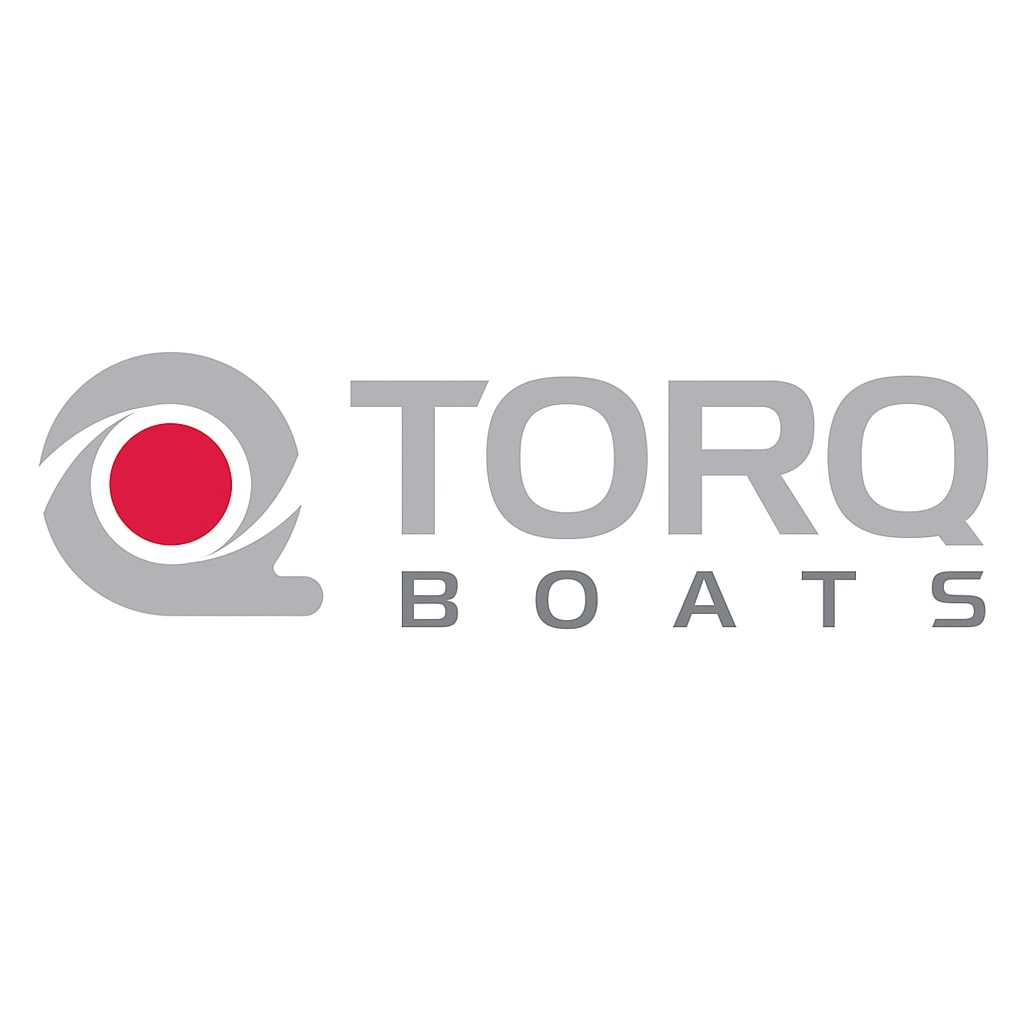




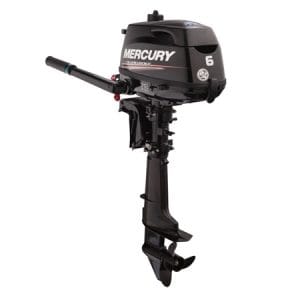
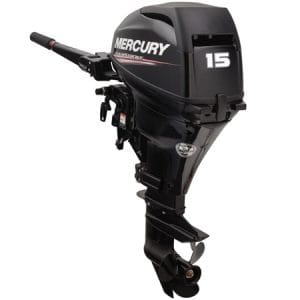
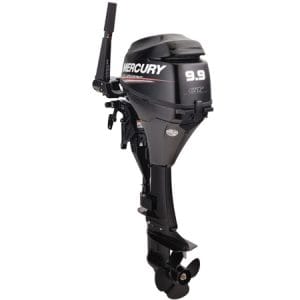
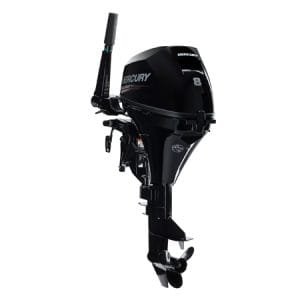
Reviews
There are no reviews yet.